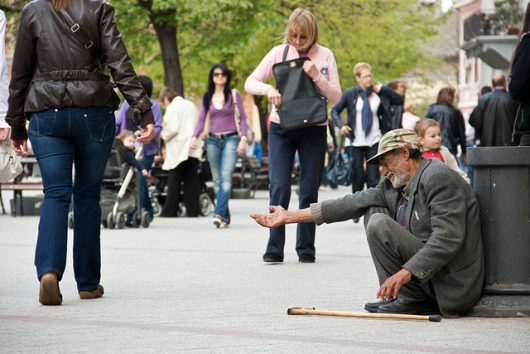Top 10 Facts About Poverty in Serbia

These top 10 facts about poverty in Serbia indicate both the struggles and progress of the country. Serbia officially became its own nation in 2006, following the split of the country known as Serbia and Montenegro. Being a newly independent country, it faces challenges of poverty and unemployment. Nonetheless, progress is being made, as these top 10 facts about poverty in Serbia are showing:
- Twenty-five percent of Serbians are impoverished. This percent translates to close to 1.8 million people. Absolute poverty, a more severe condition of poverty has been slowly decreasing, from 7.6 in 2010 to 7.3 in 2016.
- Poverty levels vary greatly in each region of Serbia, but in general, the south has a greater rate of people at risk of poverty than the north. Rural areas, where almost half of the population lives, has the double rate of poverty comparing to urban areas.
- Households are 10 times more likely to be impoverished if the head of the house has not completed primary school. The risk of poverty directly correlates with the level of education of the head of the household.
- Serbia is vulnerable to floods and earthquakes. Earthquakes affect 60,000 people a year and result in losses of $300 million. Floods are even more frequent and also more impactful, affecting 200,000 people and causing a loss of $1 billion yearly.
- The primary school completion rate is 94.8 percent. High school completion rate is 90.1 percent. Enrollment rates have been rising since 2010, for males and for females as well. In fact, female higher-education enrollment rate surpasses the male enrollment rate by 17 percentage points.
- The overall unemployment rate is 14.8 percent. Youth unemployment rate is 44.2 percent. According to UNDP, the reason for these high rates is the disparity between workforce needs and the Serbian education system. Serbia has adopted the youth employment-focused National Employment Action Plan, among other plans, in an attempt to decrease unemployment from 23 percent when it began in 2013.
- The YF Innovation Serbia project, which was completed in 2016, is another way Serbia has made progress towards improving unemployment rates. One of the goals of the project was to encourage entrepreneurship in Serbia by assisting startups, funding projects and opening research institutions. It ultimately helped improve Serbia’s economic growth and create more job opportunities for its citizens.
- Serbia is currently working on becoming a member of the European Union. To achieve this goal the country must go through a pre-ascension phase which includes economic development, increased human rights and an improved government system. To aid with this process, the European Union has allocated 1.5 billion euros for Serbia’s development.
- Serbia’s GDP is projected to grow by 3 percent or 4 percent by 2020. In 2017, Serbia’s economic growth was slowed by drought and energy production issues but this was a temporary setback. Other sectors, such as industry and services, did show growth despite these problems.
- Serbia’s Human Development Index score was 0.745 in 2014 with an average annual increase of 0.6 percent. This score reflects the high level of human development in Serbia
While poverty still remains an issue in Serbia, the action is certainly being taken to counter it, especially through joining the EU. The standards that the EU holds for its members encourage a better economy and quality of life of its citizens. In the past, most countries have seen economic growth as a result of this same process. Evident in these top 10 facts about poverty in Serbia, Serbian poverty shows promise of slowing down.
– Massarath Fatima
Photo: Flickr
